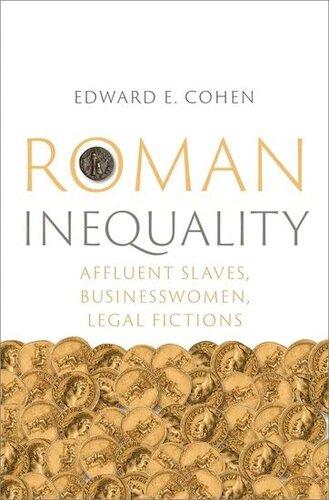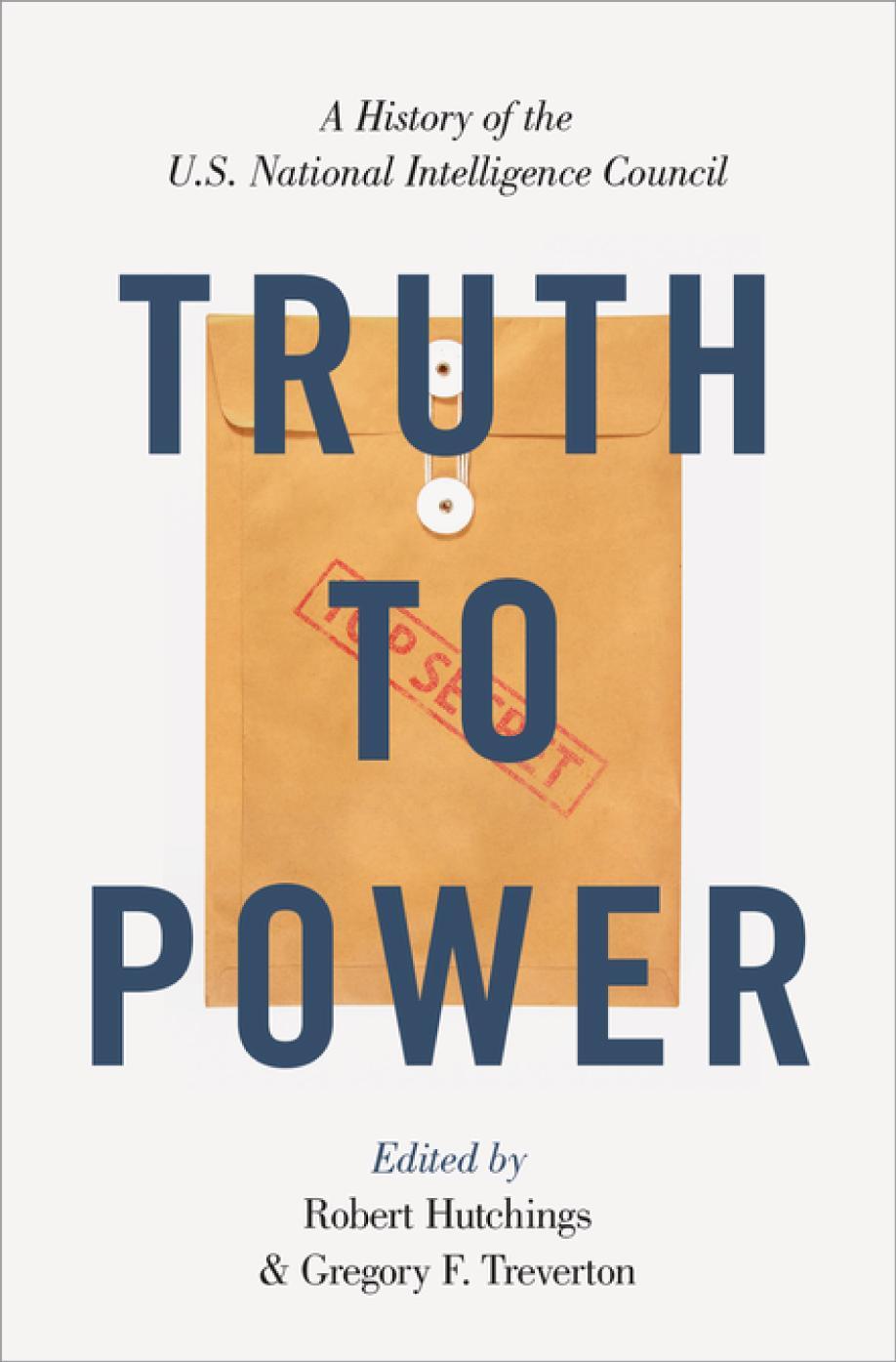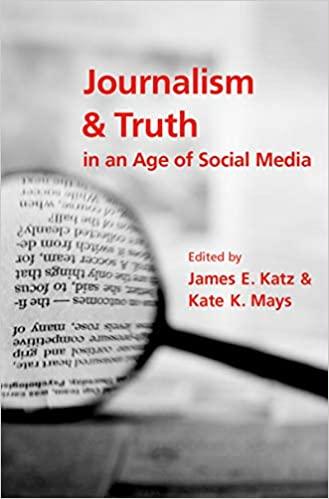Between Truth and Power
The Legal Constructions of Informational Capitalism
JULIE E. COHEN
Oxford University Press is a department of the University of Oxford. It furthers the University’s objective of excellence in research, scholarship, and education by publishing worldwide. Oxford is a registered trade mark of Oxford University Press in the UK and certain other countries.
Published in the United States of America by Oxford University Press 198 Madison Avenue, New York, NY 10016, United States of America.
© Julie E. Cohen 2019
All rights reserved. No part of this publication may be reproduced, stored in a retrieval system, or transmitted, in any form or by any means, without the prior permission in writing of Oxford University Press, or as expressly permitted by law, by license, or under terms agreed with the appropriate reproduction rights organization. Inquiries concerning reproduction outside the scope of the above should be sent to the Rights Department, Oxford University Press, at the address above.
You must not circulate this work in any other form and you must impose this same condition on any acquirer.
The author has made an online version of the book available under a Creative Commons Attribution-Noncommercial-Share Alike License, beginning one year (12 months) after publication of the hardcover edition of the Work; it will be accessible through the author’s website at www.juliecohen.com
Library of Congress Cataloging-in-Publication Data
Names: Cohen, Julie E., author.
Title: Between truth and power : the legal constructions of informational capitalism / Julie E. Cohen.
Description: New York, NY : Oxford University Press, 2019. | Includes bibliographical references.
Identifiers: LCCN 2019002684 | ISBN 9780190246693 (hardcover)
Subjects: LCSH: Internet industry—Law and legislation—United States. | Trade regulation—United States.
Classification: LCC KF1617. C65 C64 2019 | DDC 343.7309/944—dc23 LC record available at https://lccn.loc.gov/2019002684
1 3 5 7 9 8 6 4 2
Printed by Sheridan Books, Inc., United States of America
For Natalie and Donald Cohen parents, teachers, contrarians
CONTENTS
Introduction: Transforming Institutions 1
PART I: PATTERNS OF ENTITLEMENT AND DISENTITLEMENT
1. Everything Old Is New Again—Or Is It? 15
2. The Biopolitical Public Domain 48
3. The Information Laboratory 75
4. Open Networks and Closed Circuits 108
PART II: PATTERNS OF INSTITUTIONAL CHANGE
5. The End(s) of Judicial Process 143
6. The Regulatory State in the Information Age 170
7. Networks, Standards, and Transnational Governance Institutions 202
8. The Future(s) of Fundamental Rights 238
Conclusion: Countermovements, Now and Then 269
Acknowledgments 273
Notes 277
Index 357
Transforming Institutions
This book is a meditation on the future of law and legal institutions in the networked information age. Its central claims are that as our political economy transforms, our legal institutions too are undergoing transformation, and the two sets of processes are inextricably related.
Encounters between networked information technologies and law tend to be framed as examples of what happens when an irresistible force meets an immovable object. So, for example, some argue that networked information and communication technologies are technologies of freedom, able to help human civilizations solve all of our most pressing problems—if only the law, which cannot move at the speed of human thought, will stop undermining technology’s potential and either get with the program or get out of the way. Others assert that it is information technology that fatally undermines the rule of law—that unbreakable encryption and untraceable alternative currencies will plunge society into chaos, or that unaccountable and fundamentally nonhuman artificial intelligences spell the end for slower and more humane traditions of governance.
Whether any of those inspiring or doom-laden predictions will come to pass is beyond my ability to know, but their premises are wrong. To begin with, technology is not a monolithic, irresistible force. Networked information technologies inevitably will alter, and are already altering, the future of law, but not because there is any single, inevitable arc of technological progress. The reason, rather, is very nearly the opposite: Information technologies are highly configurable, and their configurability offers multiple points of entry for interested and well-resourced parties to shape their development. To understand what technology signifies for the future of law, we must understand how the design of networked information technologies within business models reflects and reproduces economic and political power.
For similar reasons, law is not an immovable object. Legal scholars who work on information policy have been intensely concerned with questions about how existing
doctrinal and regulatory frameworks should apply to information, algorithms, technical protocols, and online behavior, perhaps undergoing some changes in coverage or emphasis along the way. They have asked, in other words, how law should respond to the changes occurring all around it. For the most part, they have not asked the broader, reflexive questions about how core legal institutions are already evolving in response to the ongoing transformation in our political economy—questions, in other words, not about how law should apply to information-economy disputes, but rather about how both information-economy disputes and new informational capabilities are reshaping the enterprise of law at the institutional level. That is a mistake. Law is one of the moving parts, and it is already responding.
Legal institutions too offer multiple points of entry for economic and political power, and as they are enlisted to help produce the profound economic and sociotechnical transformations that we see all around us, they too are being changed. Struggles to shape the patterns of information flow are seeking out new modes of recognition and accommodation within the legal system. Slowly but surely, that process is restructuring the legal system itself, altering the substance and interpretation of fundamental legal guarantees, the fora within which legal rights and obligations are defined, and the ways that they are enforced.
None of this should surprise us, because our current legal system is to a great extent the product of an earlier period of sociotechnical and economic transformation. From the late eighteenth century through the mid-twentieth century, as accountability for industrial-age harms became a pervasive source of conflict, legal systems in the industrializing world underwent profound, tectonic shifts. In the United States, important doctrinal, procedural, and institutional changes included the emergence and gradual refinement of the modern corporate form, standardized commercial laws, newly expansive conceptions of tort liability, new rules for exercising personal jurisdiction over faraway parties to civil disputes, liberalized pleading standards, the structure of the modern regulatory state, and new paradigms for understanding constitutional rights and their limits.
Today, ownership of information-age resources and accountability for information-age harms have become pervasive sources of conflict, and different kinds of change are emerging: new claims about entitlement and accountability; new procedural devices for vindicating (or declining to vindicate) those claims in litigation; new mechanisms for extrajudicial definition and enforcement of claimed legal rights; new obligations relating to financial stability, data protection, and network management; new regulatory mechanisms for defining and policing compliance with those obligations; and new transnational institutions for economic and network governance. In many cases, those changes are hotly contested. We are witnessing the emergence of legal institutions adapted to the information age, but their form and their substance remain undetermined.
This book interrogates the possible futures of a legal system that we have come to take for granted. Its premise is that when attempting to find one’s way through
the jungle, it is useful to consider paths of least resistance, but it is also essential to understand the overall topography, lest one inadvertently stumble into quicksand or wander over a cliff. Rather than offering specific prescriptions for legal reform, it simply seeks to help the reader understand and parse the profound, systemic changes that are already underway.
The balance of this introductory chapter lays some essential groundwork. It begins by situating networked information technologies and law in relation to economic and political power. It then briefly sketches the ongoing and interrelated transformations in political economy and political ideology (or governmentality) that are now underway. Finally, it returns to law, situating legal institutions within processes of economic and ideological transformation.
Negotiations: Code and Law between Truth and Power
This book derives its title from that of a deceptively small pamphlet, titled “Speak Truth to Power” and circulated by intellectual leaders of the Quaker faith in 1955 as the Cold War military buildup gathered momentum.1 The pamphlet opposed the buildup and advocated a peaceful resolution. Critically, it focused not only on the moral costs of militarization but also on the opportunity costs. Resources devoted to the production and strategic deployment of expensive weapons were resources that could not be devoted to improving standards of living for the world’s neediest people. For the writers of the pamphlet, speaking truth to power meant confronting power with a fundamental choice between military domination and human wellbeing, a choice played out not only at the level of policy but also and more fundamentally at the level of political economy.
In the decades since the Cold War, the notion of speaking truth to power has become a familiar protest trope, deployed in a wide variety to contexts to signal both the power of the moral high ground and the necessity of resistance. Those themes reverberate through contemporary discussions of the nature and social impact of networked information and communications technologies. They are extraordinarily important but their expression is often extraordinarily naïve.
At its inception, the internet was conceived as the inevitable servant of truth— as a “technology of freedom” that would enable both political and economic selfdetermination.2 We have known for some time now that this rather deterministic view is too simple. Scholarship in science and technology studies has shown that new technologies do not have predetermined, neutral trajectories, but rather evolve in ways that reflect the particular, situated values and priorities of both their developers and their users. The various technological layers and protocols that comprise the internet and the diverse array of devices that connect to it are no different.
As already noted, networked information and communication technologies are highly configurable, and that characteristic inevitably draws attention to the behavioral changes that different configurations might produce. The plasticity of digital “code” affords points of regulatory leverage to both state and private actors.3
Contemporary legal and policy discussions about the internet and digital technologies, however, nonetheless have retained more than a little of their original idealism. Informed by characterizations of code as regulatory, deterministic claims about the way that code “is” have evolved into normative claims about the way that it should be. For the last two decades, a loose coalition of social movements, nongovernmental organizations (NGOs), and academics, joined at one time or another by various other actors, has promoted a vision of networked information and communication technologies as tools for advancing the goal of freedom from political oppression. In those efforts, a different kind of technological essentialism has persisted, which resides in the formulation of claims about the nature of fundamental rights to internet access and use. Such claims seem to presume that tools for censorship and surveillance of information flows are afterthoughts or hostile add-ons, and that market forces will route around them, incentivizing technological development that is connective and egalitarian.4 As we will see throughout this book, that view is mistaken on a number of levels. Even the technologies in use in democratic societies increasingly incorporate, at their core, capabilities for differentiation, modulation, and interdiction of information flows.
Accounts of the political and cultural functions of law can be similarly idealistic. The law school where I teach takes as its motto the statement that “Law is but the means; justice is the end,” and many law schools would describe their mission similarly. Lawyers understand themselves to be stewards of the principles and institutions that hold a society accountable to its citizens and take that mission seriously. But lawyers at work play many different roles in relationship to both state and private power. They serve as activists for legal modernization and as agents for the powerful interests that seek to alter existing principles and institutions to their own advantage. As we will see throughout this book, moreover, those two roles often converge; initiatives for legal modernization have a way of aligning with the efficiencies that powerful interests have identified and the rationalizations they advance to frame particular kinds of change as desirable.
By the same token, legal institutions are not fixed, Archimedean points around which modes of economic development shift and cohere. They are arenas in which interested parties struggle to define what constitutes “normal” economic or government activity and what qualifies as actual or potential harm, and they are also artifacts whose form and function are not preordained. We should not be surprised to see the tensions between these competing functions become particularly acute during periods of rapid sociotechnical and economic change. And we should not be surprised if, as a result, the institutions themselves begin to change, as well.
In short, networked digital media technologies and infrastructures are not— and never could be— simply instrumentalities of liberation, and law is not— and never could be— simply an instrumentality for the promotion of just outcomes, a neutral arbiter of disputes, or a disinterested agent of modernization. In their different ways, both networked media infrastructures and legal institutions sit between truth and power. They can be means for resisting domination or vehicles for embedding it, but even that formulation is too simple. Through their capacities to authorize, channel, and modulate information flows and behavior patterns, code and law mediate between truth and power. The terms of the dialogue are shaped by the technological and institutional settlements that emerge as struggles to shape the emerging networked world wind their way toward resolution.
According to the conventions of many academic disciplines, at this point it would be appropriate to offer a theory of power in which to ground the inquiry we are about to undertake. The study of law and legal institutions, however, teaches both appreciation for power’s resourcefulness and skepticism about the quest for a perfect theoretical construction capable of describing it. The essence of power lies precisely in its ability to shape- shift—to elude the perfect, crystalline characterizations with which scholars have attempted to both capture and cabin its methods of operation. Power in operation is pragmatic, seeking and finding paths of least resistance and mobilizing the practical and conceptual resources that appear ready to hand. The subject of this inquiry will not be power in the abstract, but rather power in legal-institutional context. That project calls for a different kind of table setting.
Transformations: Political Economy as/and Governmentality
For some time now, political economies in the developed world have been undergoing a transformation from industrial to informational capitalism. That transformation in turn has begun to elicit new ways of framing and understanding the roles of government, and of systems for social ordering more broadly, in relation to private economic activity.
Following the sociologist and theorist of the information society Manuel Castells, I use “informational capitalism” to refer to the alignment of capitalism as a mode of production with informationalism as a mode of development. Capitalism “is oriented toward profit-maximizing, that is, toward increasing the amount of surplus appropriated by capital on the basis of the private control over the means of production and circulation,” while informationalism “is oriented . . . toward the
accumulation of knowledge and towards higher levels of complexity in information processing.”5 In a regime of informational capitalism, market actors use knowledge, culture, and networked information technologies as means of extracting and appropriating surplus value, including consumer surplus.
My intent in adopting that framing is not to suggest that regulation of industrial-era processes and markets is no longer important or that the corresponding regulatory constructs are necessarily obsolete. Institutional changes are slow and piecemeal, and shifts in political economy can span decades or even centuries. More generally, the relationship between industrialism and informationalism is not sequential, but rather cumulative. The emergence of informationalism as a mode of economic development also is powerfully shaped by its articulation within capitalist modes of production, with all of the economic, sociotechnical, organizational, and ideological baggage that that history entails.6
In referring to the shift from industrialism to informationalism, then, I do not mean to make rapturous (or apocalyptic) pronouncements about the end of industry but rather to indicate two kinds of fundamental transformation. First is a movement away from an economy oriented principally toward manufacturing and related activities toward one oriented principally toward the production, accumulation, and processing of information. In an information economy, the mass model of production that emerged in the industrial era is itself increasingly redirected toward development of intellectual and informational goods and services, production and distribution of consumer information technologies, and ownership of service-delivery enterprises.7 Second is a transformation in the conduct of even traditional industrial activity. In an information economy, information technology assumes an increasingly prominent role in the control of industrial production and in the management of all kinds of enterprises.8
Some academics and lay commentators who study the emerging networked information society identify additional, distinct phases of political economic transformation. Some of those phases—such as consumer capitalism, managerial capitalism, financial capitalism, and surveillance capitalism—involve changes in the means of surplus extraction.9 Although there is much to learn from the details of such developments, in my view focusing first and foremost on such divisions threatens to diminish the underlying transformative importance of the sociotechnical shift to informationalism as a mode of development. Other formulations—including notably the “Fourth Industrial Revolution” framing popularized by the World Economic Forum—foreground the technological at the expense of the social.10 It is important not to lose sight of the sociotechnical, and of the contingency and constructedness of the changes that powerful, self-interested actors have set in motion.
The continuing orientation toward capitalist production, surplus extraction, and accumulation points toward a second, related transformation, which concerns
the ideological framework that serves to legitimate and facilitate economic activity and, therefore and relatedly, to underwrite processes of governmental and social reorganization. Following the tradition of critical social theory, I will refer to that framework together with its organizational and practical entailments as governmentality.11
The dominant forms of governmentality associated with industrial political economy were liberal, broadly speaking; the dominant forms of governmentality associated with informational capitalism are neoliberal. Relative to liberal governmentality, neoliberal governmentality represents both continuity and change. Liberal political philosophy radically decentered the sovereign state, positioning the sovereign individual as the ultimate source of political authority; liberal governmentality undertook a parallel decentering, positioning enlightened, self-interested rationality as the origin point for social ordering.12 Neoliberal governmentality similarly emphasizes the primacy of private ordering, but both the scope that neoliberalism claims for private ordering and the role that it envisions for government are different.
In one frequently cited formulation, the political philosophy of neoliberalism “propos[es] that human well-being can best be advanced by the maximization of entrepreneurial freedoms within an institutional framework characterized by private property rights, individual liberty, unencumbered markets, and free trade.”13 Notably, however, the neoliberal political orientation emphasizes not only market liberties but also a market-based approach to structuring political and social participation. Viewed through the prism of neoliberal governmentality, the most virtuous and effective forms of social ordering are mimetic, incorporating and responding to marketized feedback about efficacy and value.14
Neoliberal governmentality does not simply elevate processes of private economic ordering; it also works to reshape government processes in their image. As many have remarked, liberal governmentality contained an embedded contradiction. Markets are not self- sustaining; left entirely to their own devices, they tend toward monopoly, destructive extraction, and rent- seeking. Therefore, they require vigilant stewardship precisely to ensure they remain sufficiently marketlike. Neoliberal governmentality resolves that embedded contradiction by bringing market dynamics and associated managerial techniques into government, infusing processes of legal and regulatory oversight with a competitive and capitalist ethos.15 Transforming government in the image of markets is not an abstract exercise. It requires changes in the nature and operation of the institutions and practices that comprise government, including not only the faceless bureaucracies typically demonized within contemporary morality tales about the primacy of markets but also legislatures, courts, and legal doctrines. The story of neoliberalization, in other words, is also and unavoidably a story about the institutional transformation of law.
Institutions: Mapping the Interplay between Power and Constraint
Law’s facilitative role in these processes of economic and ideological transformation is foundational and generally unremarked. Scholars who study the relationship between law and political economy have begun to argue that law is not simply superstructure but rather the means through which expressions of economic rationality and governmentality become specific, detailed, and actionable.16 This book brings that perspective to bear on the intertwined processes of informationalization and neoliberalization. Both processes have mobilized the institutional resources afforded by legal systems worldwide. At the same time, however, those processes also are transforming legal institutions, gradually optimizing them for the new roles they are called upon to play.
Consider first two examples from earlier moments in Anglo-American legal history. In his influential account of the “great transformation” in British political economy, Karl Polanyi interrogated Britain’s centuries- long transition from an agrarian system of political economy to an industrial and capitalist system, identifying the mismatches between the demands of the emerging market system and those of human well-being and tracing the gradual emergence of a protective countermovement that included distinctively legal components.17 The initial movement to industrial capitalism, however, also entailed both reliance on and restructuring of legal institutions. Processes of enclosure of common lands, appropriation of other natural resources, displacement of populations from farms to cities, construction of factories for extraction of the value of commodity inputs (including wage labor), and trade in the resulting products all required enabling legal constructs in order to work. A series of gradual, ineluctable changes in the British legal system worked to facilitate each of those developments, providing the frameworks within with enclosure, appropriation, extraction, and accumulation could proceed.
A century later, the American political economic landscape underwent a parallel transformation. The part of that story with which contemporary lawyers and legal scholars are most familiar involves the American version of the protective countermovement—the creation of the modern administrative state during the first half of the twentieth century and the bitter disputes about constitutional law that accompanied it. As legal historian Morton Horwitz has shown, however, those disputes were themselves shaped by earlier doctrinal and conceptual realignments that privileged rising industrial and commercial interests. The development of private and commercial law during both the antebellum period and the post–Civil War years, and critically the emergence of an instrumental, rationalist view of the common law’s purpose, established the distributive backdrop for the disputes about public law that unfolded later.18
Today, as accountability for information-age harms has become a pervasive source of conflict, different kinds of change are on the table. Once again, powerful interests have a stake in the outcome, and once again, they are enlisting law to produce new institutional settlements that alter the horizon of possibility for protective countermovements. And once again, critics of law’s neoliberalization have focused principally on a set of burgeoning crises for public law but have largely neglected to ask a set of more fundamental questions about implicit distributional and institutional predicates.19 Law for the information economy is emerging not via discrete, purposive changes, but rather via the ordinary, uncoordinated but self-interested efforts of information-economy participants and the lawyers and lobbyists they employ. Slowly but surely, those efforts are rearranging the legal landscape, producing results that reflect intertwined processes of conceptual and practical neoliberalization at work.
At the same time, however, the story of the complex and richly productive relationships among political economy, neoliberal governmentality, and legal institutions is a story about power both asserted and constrained. Legal institutions are the mechanisms through which changes in governmentality assume concrete forms that shape the options available to social and economic participants, and those forms also impose limitations. Some limitations reflect historical and sociotechnical contingency; the previous era’s institutional settlements become the residue with which the next era’s institutional entrepreneurs must contend. Other limitations are more durable and demanding. In societies with stable rule-of-law traditions, power confronts principles and commitments that must be honored. Legal institutions therefore are much more than simply substrates to be made and remade according to perceived economic and political imperatives; they are also the sites at which the project of mediation between truth and power unfolds.
The focus on institutions dictates a certain amount of geographic and cultural specificity. This project focuses principally on the legal-institutional trajectories that have emerged in the United States. That focus, I think, is also defensible for another reason: the United States is where many (though not all) of the major global information businesses now reshaping the political economic landscape are headquartered. The institutional settlements now emerging within the U.S. legal system are therefore relevant both domestically and globally. My hope is that scholars more familiar with other legal systems will undertake similar projects.
Plan of the Book
The chapters that follow map processes of legal-institutional transformation on two complementary and mutually reinforcing levels.
The first level on which legal-institutional transformation is occurring involves baseline understandings of legal entitlement and disentitlement. In the emerging
information economy, the understandings that characterized the industrial economy are shifting in ways that extend across preexisting doctrinal boundaries and that challenge the distinctions such boundaries attempt to impose. Chapter 1 describes the increasing virtualization and datafication of important economic resources and traces the emergence of the platform as the core organizational logic of the informational economy. Chapter 2 identifies the enabling legal construct that underwrites new techniques of personal data harvesting and processing and explores its doctrinal, architectural, and policy entailments. Chapters 3 and 4 move beyond appropriation of resources to consider other patterns of entitlement and disentitlement that involve accountability, immunity, authority, and obligation. Chapter 3 explores the affordances of contemporary, platform-based, massively intermediated information environments and traces the emergence of a constellation of powerful de jure and de facto legal immunities that insulate their architects and operators from accountability for a wide and growing variety of harms. Chapter 4 interrogates the evolving debates about interdiction of information flows, framing those debates as three-way struggles among nation-states, global entertainment businesses, and information platforms and identifying several more durable changes that those struggles are producing.
The second level on which legal-institutional transformation is occurring involves the structure and operation of regulatory and governance institutions. Chapter 5 considers patterns of change in legal processes for dispute resolution, including both the evolution of conceptions of justiciable injury and the emergence of new, explicitly managerial conventions for routing different kinds of disputes for different kinds of processing. Chapter 6 shifts the focus to the regulatory state, exploring the ways that informationalization of economic activity has both disrupted long-established regulatory constructs and elicited new, neoliberalized mechanisms for regulatory oversight. Chapters 7 and 8 adopt a more explicitly transnational and experimental focus. Chapter 7 investigates the emergence of network-and-standard-based legalinstitutional arrangements for transnational governance, parsing the mechanisms through which neoliberalized agendas for the management of economic and network processes have begun to “route around” the disruptions imposed by older, less adaptable legal forms. Chapter 8 explores the widening mismatch between information-economy threats to fundamental human rights and institutions dedicated to protecting and preserving those rights.
In interrogating the relationships between political economy and the structure of legal entitlements and institutions, I hope also to prompt reflection on the ways that transformations in political economy shape the horizons of possibility for protective countermovements. The book therefore concludes with a brief meditation on that question.
Everything Old Is New Again— Or Is It?
We’ve changed our internal motto from “Move fast and break things” to “Move fast with stable infrastructure.”
Mark Zuckerberg, Remarks at F8 Developer Conference, April 2014
To understand the emergence of the informational economy and the role of legal entitlements in facilitating it, it is instructive to begin by looking backward. Among economic historians, a useful frame for understanding the emergence of industrial capitalism is Karl Polanyi’s analysis of a “great transformation” in the system of political economy that involved appropriation of newly important resources but that also moved on conceptual and organizational levels. The basic factors of industrial production—labor, land, and money—were reconceptualized as commodities, while at the same time patterns of barter and exchange became detached from local communities and re-embedded in the constructed mechanism of “the market.” Both developments lent momentum and legitimacy to the resource-directed activities about which so much has been written—large-scale enclosures of land, displacement of populations, extraction of natural resources, and construction of factories. Together, those appropriative, conceptual, and organizational shifts produced a decisive movement toward a capitalist political economy. Then, when the resulting dislocations become too extreme, they prompted a protective countermovement aimed at ameliorating their effects.1
Extending the analytical frame and the metaphor of the double movement, this chapter frames the emergence of informational capitalism in terms of three large-scale shifts that together constitute the movement toward informational capitalism: the propertization (or enclosure) of intangible resources, the dematerialization and datafication of the basic factors of industrial production, and the embedding (and rematerialization) of patterns of barter and exchange within information platforms. Whether the effects of those changes will elicit a meaningful countermovement is yet to be seen.
This chapter sketches the ongoing processes of propertization, datafication, and platformization, with particular attention to the shifting, emergent relationships
between control of intangible intellectual resources and political economy. First, it traces the evolution of modern regimes of intellectual property protection, identifying a series of profound changes that relate to both imagined justifications and patterns of exploitation and use. Second, it explores some of the ways that the basic factors of industrial production identified by Polanyi—labor, land, and money—are becoming dematerialized and datafied to facilitate their more efficient exploitation. Finally, it interrogates the ongoing shift from a market-based economy to a platform-based economy, identifying ways in which that shift has begun to reshape both the nature of informationalized production and understandings of information ownership. Laying bare the key structural elements of the movement to an informational economy underscores both the facilitative role of law and the extent to which the landscape of legal entitlements in information is in motion.
Capital without Industry?
At the most general level, an informational economy is one oriented principally toward the production, accumulation, and processing of information, but that description leaves substantial room for debate over the rules governing control of informational resources. Scholars of the information society have waged heated debates about intellectual property’s optimal contours and essential characteristics. My concern here is with historical and material contingencies rather than metaphysical essentials. This section describes important trends in the evolution of formal legal entitlements in intellectual property from the mid-twentieth century through the present. As we will see, the movement to an informational political economy has both relied on and reshaped the legal rules governing propertization of intangible intellectual goods. Information-era intellectual property rights, both old and new, have evolved in ways that reproduce and deepen existing patterns of control over and concentration of capital. The changes have entailed corresponding shifts in prevailing narratives about both ownership of intangible production and the kinds of rights that ownership confers.
Production Values
In the pantheon of intellectual property rights, the grandest rights are patents and copyrights, which are designed—or so the story goes—to motivate and reward individual inventors and creators. From the beginning of the modern era, however, debates about patent and copyright policy have concerned the relationships between individual creators and production intermediaries—industrial firms on the patent side and publishers, motion picture producers, and record labels on the copyright side. As the movement to an informational economy has gathered speed, new strands of justification have begun to emerge that emphasize the
claims of intermediaries more directly. The ever-increasing primacy of production intermediaries also has produced deeper shifts in the ways that rightholders describe, understand, and exploit patents and copyrights, which relate to appropriation strategies, methods of valuation, and mechanisms for ensuring access to certain types of persistently individualized inputs.
Some of the reasons for the primacy of production intermediaries within the industrial-era patent and copyright systems were technological and some were organizational. Industrial firms with access to capital assembled the research teams and the material resources needed to solve large-scale technical problems and built the production and transit facilities needed to manufacture and distribute the resulting industrial and consumer products. Similarly, before the advent of powerful desktop computing platforms put professional-quality editing capabilities within easy reach, access to specialized equipment was necessary to produce cultural goods in forms suitable for the mass market. Dissemination of creative outputs required access to printing presses, newsstands and bookstores, movie theaters, or broadcast airwaves. Terminology in the creative industries came to reflect the reality of intermediated creative production; so, for example, in some circles it became customary to describe cultural goods in terms of production values. Even today, production intermediaries can perform well some tasks—such as marketing and promotion—that most creators themselves perform very poorly.
Unsurprisingly, the patent and copyright regimes that evolved in the United States beginning in the late nineteenth century were increasingly optimized for facilitating industrial processes of intangible production. One important set of developments concerned corporate ownership of intellectual creations. Although neither the Patent Act nor, initially, the Copyright Act gave employers rights to their employees’ creations, judge-made rules developed to validate corporate practices of asserting ownership over employee-created inventions and creative works. Strands of state tort and contract law coalesced into trade secrecy doctrines providing that those who employed people for “inventive” duties owned the resulting inventions; that default rule, in turn, made subsequent assignment of any issued patents to one’s employer ordinary and expected.2 Courts in copyright cases involving employers reasoned that authorship of commissioned works should flow to the party that had assumed the economic risk. The 1909 revision of the Copyright Act codified copyright’s emergent work-made-for-hire conventions, and the 1976 revision added a series of detailed provisions covering works commissioned from certain types of freelancers.3
Other developments altered the scope of patents and copyrights in ways that favored powerful new industries. Courts rejected a long-standing rule allowing competitors to exploit “unworked” patents in exchange for a reasonable royalty, clearing the way for corporate patent owners to amass portfolios of patents and make unilateral decisions about their use or nonuse. The 1952 revision of the Patent Act rejected various judicially developed limitations on patentability; eliminated
uncertainties about the patentability of improvements to existing inventions and of methods combining well-known materials and steps; and defined patent rights in a way that ratified the use of blocking patents as bargaining chips.4 On the copyright side, a series of statutory amendments extending over the course of the century vastly extended the duration of both future and already-subsisting copyrights and expanded the scope of copyright protection to cover the byproducts of new recording and broadcast technologies. The 1976 revision of the Copyright Act contained broad, general rights and narrow, specific limitations, eliminating the latitude that formerly had existed for many nonprofit and downstream uses of copyrighted works. It also codified for the first time a broad right to control preparation of so-called derivative works based on or adapted from other works.5
The increasingly pronounced statutory and doctrinal orientation toward industrial production and distribution of intangible intellectual goods accounts for the strange dual quality of the rhetoric in debates about intellectual property policy. Legal scholars have disagreed about whether romantic creatorship or economic instrumentalism is the dominant strand in that narrative, and about the goodness of fit between both justifications and the actual practices of individual creators and creative communities. Those disagreements, however, often overlook the way that desert-based and instrumentalist narratives began to work together to bolster a particular regime of legal protection for intangibles that relied on and reinforced the role of capital in underwriting intellectual production.6
Twentieth-century debates about intellectual property policy also reveal a gradual shift in the tenor of the instrumentalist justification for granting patents and copyrights. Whereas nineteenth-century rhetoric had emphasized the public and democratic benefits to be gained from underwriting progress in science and learning, the distinctive flavor of instrumentalism that developed beginning in the mid-twentieth century focused more narrowly on incentives to production. The emergence and rapid ascendancy of Chicago- School neoclassical economic analysis, which emphasized the role of individual choice, accelerated the turn to incentivebased reasoning. It also provided a point of entry for express consideration of the incentives of the production intermediaries without which, as the argument went, many intangible intellectual goods would not be produced and distributed at all.7 Most recently, in disputes raising questions about harmonization with international intellectual property developments, some courts and commentators have evinced a willingness to abandon creator-centric rhetoric altogether, focusing instead on concerns about the balance of power in international trade. Industry associations that used to bring individual authors to testify before Congress now send their own officials, who make arguments about distribution incentives, trade balances, and gross national product.8 The Supreme Court has cited both the argument from intermediary incentives and the argument from trade as ineluctable realities.9
As intellectual property rhetoric has evolved to emphasize the primacy of corporate claims, deeper conceptual and structural changes in the patent and copyright
systems have been underway. Although individual patents and copyrights remain the theoretical basic units of protection, intellectual property law’s formal atomism belies some of the ways that the foundations for the industrial organization of cultural and technical production have shifted to facilitate amassing intangible capital at scale. Because many intangible assets are most valuable when exploited in combination, large rightholders now routinely and deliberately amass strategic portfolios of intangible assets.10 Portfolio-based intellectual property strategies in turn exert ripple effects on both judge-made doctrines and customary practice. So, for example, courts initially were reluctant to recognize copyrights in any but the most central literary characters, worrying that such copyrights would work to the detriment of authors who had assigned their copyrights to publishers. Today, however, character copyrights are cornerstones of merchandising campaigns that extend across movie and television franchises, and the test for character copyrightability has evolved to facilitate the coordinated exploitation of entertainment properties that extend over multiple works.11 A patent grant requires disclosure sufficient to enable a person ordinarily skilled in the art to practice the claimed invention. Courts interpreting the enablement requirement have framed the conceptualization of the person ordinarily skilled in the art in a way that permits drafters in certain industries to practice systematic vagueness, and firms also have learned to practice selective, patent-preempting disclosure in ways that both strengthen their own portfolio positions and disadvantage their competitors.12
Meanwhile, the perceived need for comprehensive and consistent methods of defining and valuing legal entitlements in intangible intellectual goods has begun to reshape entire areas of business-related law: What is the best way to express the effects of patents and research programs on stock prices—and what disclosures should securities regulators therefore require? Are there alternative avenues for capitalization that do not require comparable levels of disclosure about intellectual property-in-the-making? What is the appropriate basis for taxation of intangible intellectual assets, and where geographically should those assets be deemed to reside for tax purposes? How can intangible intellectual assets and portfolios of those assets be collateralized, and how should such assets be valued in bankruptcy proceedings? How should the risk of infringement liability affect insurance availability and pricing?13 Each of those legal fields, moreover, values certainty and predictability in asset definition, and that overarching need shapes the way firms assert intellectual property claims, disfavoring doctrines perceived as vague and uncertain. The repeated, self-interested assertion of positions aimed at minimizing uncertainties has begun to produce doctrinal shifts. So, for example, many fair use disputes have become disputes about the weight to be given to norms and practices favoring licensing. Courts in patent obviousness disputes have developed ancillary tests that emphasize commercial success and diminish the likelihood of an “obvious to try” finding, and the doctrine of equivalents plays a much less significant role in the patent infringement litigation landscape.14












